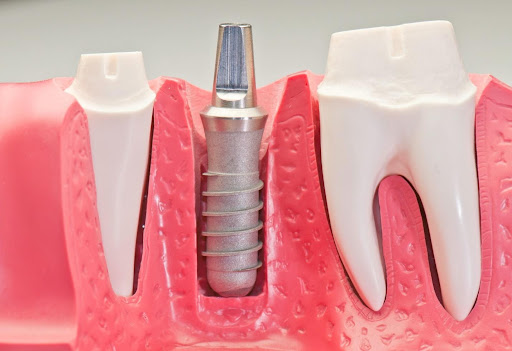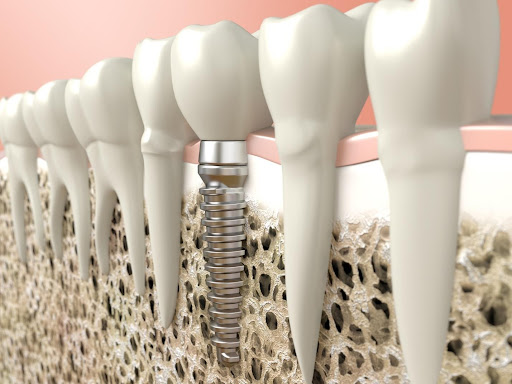Missing a tooth causes a lot of problems since it will affect your bite and alter the shape of your face. This will also make you more self-conscious when you talk or smile. If you’re choosing to replace a single missing tooth, a dentist might recommend dental implants, while others may advise you to have a bridge if there are several of them missing. More about the procedures of a dental implant on this page here.
A dental implant involves artificial roots of the tooth that’s usually made of titanium. They are done surgically where the roots are placed inside your jawbone. You might need to wait for several months before the jawbone surrounds the implant, which will hold your artificial tooth securely in place. Most of the replacement teeth will then be connected to the implant, and the dentist will place the crown at the top, which will fill any gaps you have.
Types to Know
Endosteal
Endosteal treatments mean that they are placed in the jawbone and this is one of the most common types of implants. They look like smaller versions of screws and are usually made of metals that are safe to the body, such as titanium.
They are surgically inserted in your jawbone, and this it’s going to be lodged deeply for a more secure tooth. The procedure will take several months because the growth of the bone that surrounds the titanium can take time. One implant will anchor several teeth, and this is going to be more permanent than a denture.
Subperiosteal
This subperiosteal type means that it’s on the bone, and this is for people who don’t have a healthy jawbone to support the endosteal treatment. They are inserted just under one’s gums but are not necessarily drilled deeper into the bone. Their placement is rather on or above the bone instead of inside it.
- Recovery and Surgery Timeline

Know that these kinds of procedures will require you to visit your dentist multiple times. You can get more information about the timeframe on St George dental implants and get an exclusive consultation with a dentist near you. Each case will vary, and the treatment time will depend on the status of your oral health. The estimated duration of the treatment that requires various steps will be around 2 to 9 months. Before the entire procedure is considered completed, specialists may need to check on you, such as oral surgeons and periodontists.
Evaluation

One of the first things that a dentist will do is evaluate your jawbone, gums, and teeth. This is a vital part at the beginning of the treatment because the assessment will tell them whether your jawbone is well-suited for the implant.
If it’s too soft or thin, they may recommend other options, including getting a bridge or a bone graft procedure. Your gums should be free of any periodontal diseases as well. The implants are usually done to replace one tooth or even more. The number of teeth that need to be replaced will determine the amount of time, scope, and type of procedure required to be done to you.
This kind of surgery is an outpatient type where local anesthesia will be applied to the site. In other cases, general anesthesia or IV sedation may be an option for more sensitive patients. The specialists will determine and let you know the types that you need.
The Placement Process
If you’re going to have an endosteal type, here are some things to know about the procedure:
-The surgeon will begin cutting the gum and expose the jawbone, which is usually under it. This will be pain-free as you’ll have anesthesia working for you during this time.
-Holes are going to be drilled deeper in the bone where the post of the implant is going to be fitted
-You may choose a removable or temporary denture that will go over the post for more aesthetic purposes. This is done until you can get the permanent tooth attached to your implant.
Subperiosteal processes will mean that there’s no need to drill the jawbone, and the post will be placed above the bone. Regardless of the type that you’re going to receive, expect to feel some sort of swelling or discomfort after the procedure. This may last for several days, but many people may find that they can resume working or doing other activities after 24 hours.
Osseointegration
After the implant placement, this could take around 3 to 6 months before the bone growth will occur. The timeline depends on the individual, and your dental care provider will check the development of the gums around the titanium screw. This is a process that’s also commonly called the “combining of the bone.”
With the osseointegration in place, the natural jawbone will become stronger and grow around the implants. Since the metal is deeply embedded, this will be put firmly into place so that it’s going to work like an artificial and firm root. You don’t have to worry about tooth dropping in restaurants, just like some cases with dentures, because you have something that holds it in place. Read more articles about osseointegration in this website: https://www.sciencedirect.com/topics/medicine-and-dentistry/osseointegration.
Placing the Abutment
Sometimes, metal extenders called abutments are going to be added to your implant. This can be done during a second minor procedure or even on the first few phases where local anesthetic is applied. The abutments are the ones connecting the a Dental Implant to the replacement tooth.
If it’s going to be added into the final phases, the surgeons will need to incise the tissues of the gum that has already grown over the titanium root. There will be a healing cap afterwards that will be placed around the implant so that the tissue won’t grow around it. When this is done in the second procedure, the orthodontist will remove the healing cap, and abutments are screwed into place. The gum tissues will then begin to contour around the abutments, and this will take several weeks to heal.
The entire process of a Dental Implant is almost complete at this point, and you have to wait for the tooth to heal. Consult your dentist if there’s swelling, severe pain, or ongoing discomfort for more than two weeks.



















